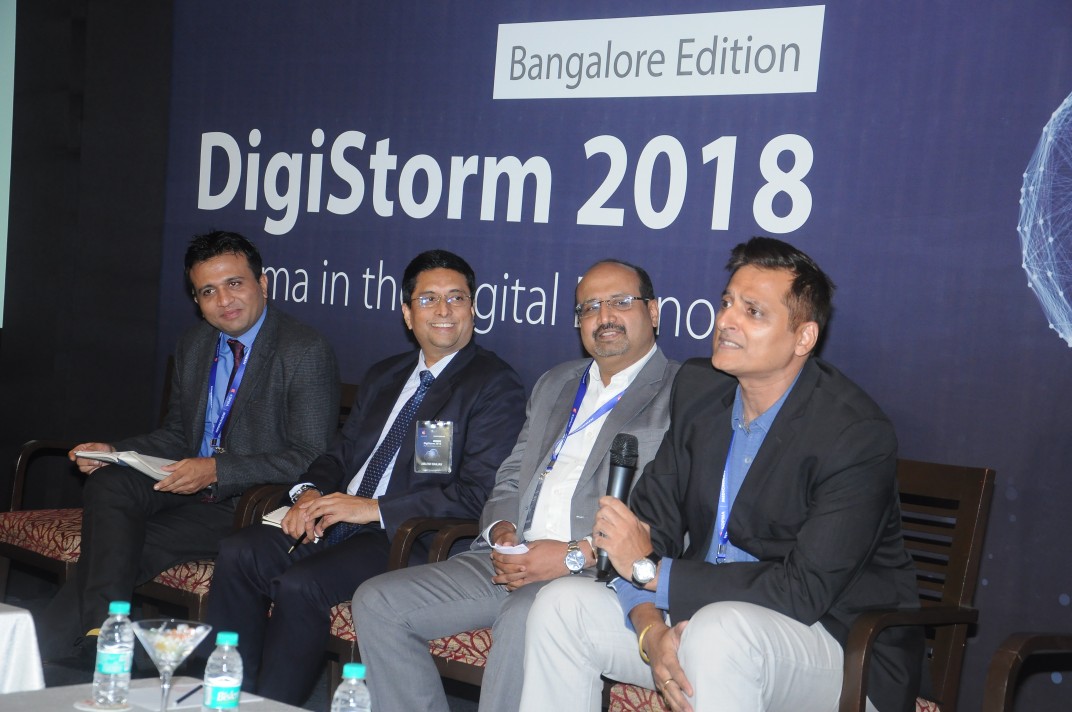Hot topics
Medical Affairs, Marketing and Sales – The Triumvirate of Pharmaceutical Business
The Medical department comprising of Clinical Operations (the ones...
Frontline Managers
Articles by Vivek Hattangadi, Raja Reddy, K. Hariram, Satish Kota, P. S. Parameswaran, Gopal Kishore, Ramandish Arora, Mohit Kumar Bhutani, Richa Goyal and Mahendra Kumar Rai
Healthcare Disruption – Will Ola, Swiggy, Pharmaeasy, and Hospitals Converge to Deliver Health Care on Call at Your Doorstep?
How long before digital Unicorns like Ola, Swiggy, Pharmeasy, and many others realize the humongous opportunity of delivering health care at the doorstep?
Imagine an app like Ola, where instead of entering where you want to go, you enter the nature of your medical need/emergency and search and find a range of hospitals/doctors/paramedics who can act as the first responders and reach your home in an ambulance or a motorbike with an HCP as a pillion rider with all necessary equipment from the thermometer to defibrillator depending on the nature of the medical care needed and triage and route you/your loved ones to the nearest hospital with an indicative cost of treatment in partnership with health insurance companies?
Violence Against Medics – Lessons to Draw from Private Hospitals
One interesting fact: most medical colleges and linked public hospitals in major cities were designed in the British era, with an open ward design. A medical administrator, tongue-in-cheek, put it succinctly: “When these hospitals were designed, nobody would have imagined that doctors will face violence”.
Time for design thinking in public healthcare delivery!
Analysis of the Fastest Growing Companies and Therapy Areas in IPM – MAT Dec’24
Growth Performance of Top 50 Companies in IPM (MAT...
Top 25 Indian Pharma Companies by Revenues in 2024
India pharma is crucial for global healthcare, providing affordable...
Top 10 Indian Pharma – 2025
India's top 10 pharma companies by market capitalization, offering insights into...
Antibody-Drug Conjugates (ADCs): The Disruptors Leading Oncology’s Gold Rush in 2025
1. Market Overview
The oncology sector remains the most dominant...
FLUX – Indian Pharma in the Post VUCA World
Introduction
For decades, leaders and organizations have relied on the...
Top 25 Indian Pharma Companies by Revenues in 2024
India pharma is crucial for global healthcare, providing affordable...
Top 10 Indian Pharma – 2025
India's top 10 pharma companies by market capitalization, offering insights into...
Antibody-Drug Conjugates (ADCs): The Disruptors Leading Oncology’s Gold Rush in 2025
1. Market Overview
The oncology sector remains the most dominant...
FLUX – Indian Pharma in the Post VUCA World
Introduction
For decades, leaders and organizations have relied on the...
Top 25 Indian Pharma Companies by Revenues in 2024
India pharma is crucial for global healthcare, providing affordable...
Top 10 Indian Pharma – 2025
India's top 10 pharma companies by market capitalization, offering insights into...
Antibody-Drug Conjugates (ADCs): The Disruptors Leading Oncology’s Gold Rush in 2025
1. Market Overview
The oncology sector remains the most dominant...
FLUX – Indian Pharma in the Post VUCA World
Introduction
For decades, leaders and organizations have relied on the...
Top 25 Indian Pharma Companies by Revenues in 2024
India pharma is crucial for global healthcare, providing affordable...
Top 10 Indian Pharma – 2025
India's top 10 pharma companies by market capitalization, offering insights into...
Antibody-Drug Conjugates (ADCs): The Disruptors Leading Oncology’s Gold Rush in 2025
1. Market Overview
The oncology sector remains the most dominant...
FLUX – Indian Pharma in the Post VUCA World
Introduction
For decades, leaders and organizations have relied on the...
Hot topics
Geo-Fencing / Shadow Messaging – Hook for Pharma Marketers
In the dynamic world of pharmaceutical marketing, staying ahead of the curve is essential for success. As technology continues to evolve, so do the opportunities for innovative campaigns. One area where pharma marketers can make a significant impact is in raising awareness about non-communicable diseases (NCDs) and promoting real-world studies and clinical trials.
Smell of the Workplace – Wonderful Metaphor to Understand the Context of Performance
In a World Economic Forum talk, Professor Sumantra Ghosal - the founding Dean of the Indian School of Business, Hyderabad - talked about the "Smell of the Workplace" as a metaphor to describe the need for creating a new context that enables employees to change their mindset from that of Constraint, Compliance, Control and Contract to that of Stretch, Discipline, Trust and Support.
Creating A Winning Sales Organisation – Workshop Announcement
MedicinMan catches up with Deep Bhandari - Advisor at UCB where he...
Pharma and the Covid19 Crisis – An Interaction with Sunil Attavar, CMD, Group Pharma
This is the first part of MedicinMan interview series...
Medical Affairs, Marketing and Sales – The Triumvirate of Pharmaceutical Business
The Medical department comprising of Clinical Operations (the ones...
Top 25 Indian Pharma Companies by Revenues in 2024
India pharma is crucial for global healthcare, providing affordable...
Top 10 Indian Pharma – 2025
India's top 10 pharma companies by market capitalization, offering insights into...
Antibody-Drug Conjugates (ADCs): The Disruptors Leading Oncology’s Gold Rush in 2025
1. Market Overview
The oncology sector remains the most dominant...
FLUX – Indian Pharma in the Post VUCA World
Introduction
For decades, leaders and organizations have relied on the...
Top 25 Indian Pharma Companies by Revenues in 2024
India pharma is crucial for global healthcare, providing affordable...
Top 10 Indian Pharma – 2025
India's top 10 pharma companies by market capitalization, offering insights into...
Antibody-Drug Conjugates (ADCs): The Disruptors Leading Oncology’s Gold Rush in 2025
1. Market Overview
The oncology sector remains the most dominant...
FLUX – Indian Pharma in the Post VUCA World
Introduction
For decades, leaders and organizations have relied on the...
Top 25 Indian Pharma Companies by Revenues in 2024
India pharma is crucial for global healthcare, providing affordable...
Top 10 Indian Pharma – 2025
India's top 10 pharma companies by market capitalization, offering insights into...
Antibody-Drug Conjugates (ADCs): The Disruptors Leading Oncology’s Gold Rush in 2025
1. Market Overview
The oncology sector remains the most dominant...
FLUX – Indian Pharma in the Post VUCA World
Introduction
For decades, leaders and organizations have relied on the...
Top 25 Indian Pharma Companies by Revenues in 2024
India pharma is crucial for global healthcare, providing affordable...
Top 10 Indian Pharma – 2025
India's top 10 pharma companies by market capitalization, offering insights into...
Antibody-Drug Conjugates (ADCs): The Disruptors Leading Oncology’s Gold Rush in 2025
1. Market Overview
The oncology sector remains the most dominant...
FLUX – Indian Pharma in the Post VUCA World
Introduction
For decades, leaders and organizations have relied on the...
MedicinMan was launched in 2011 as India’s 1st Magazine dedicated to the cause of Field Force Excellence in Pharma and Devices.
Read More
Headlines
Top 25 Indian Pharma Companies by Revenues in 2024
India pharma is crucial for global healthcare, providing affordable...
Top 10 Indian Pharma – 2025
India's top 10 pharma companies by market capitalization, offering insights into...
Antibody-Drug Conjugates (ADCs): The Disruptors Leading Oncology’s Gold Rush in 2025
1. Market Overview
The oncology sector remains the most dominant...
Newsletter
Get important news delivered directly to your inbox and stay connected!




